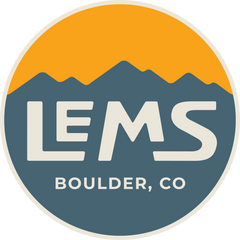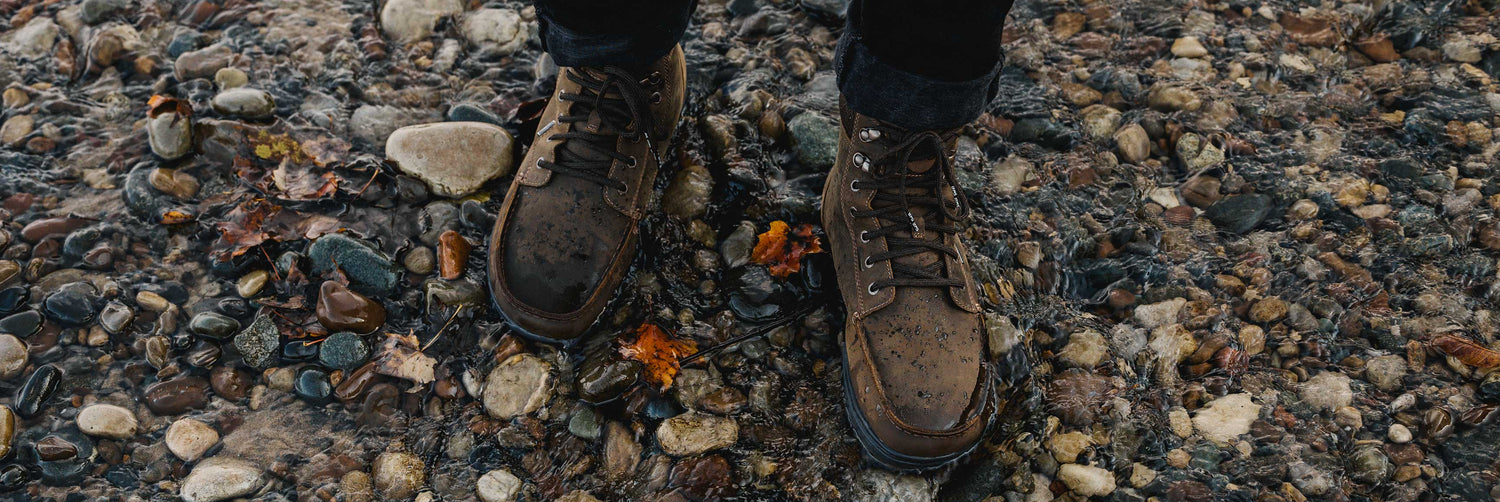The Boulder Boot Grip Waterproof and the Boulder Summit Waterproof may seem similar at first glance, but they each bring their unique features to the table. In this article, we'll compare the similarities and differences between these two boots, helping you make an informed choice based on your specific requirements. Whether you're an avid hiker, urban explorer, or simply someone who values comfortable and stylish footwear, read on to discover which boot aligns best with your outdoor aspirations.
Meet the Boots
- Lems Boulder Boot Grip WP: The Boulder Boot Grip is an exceptional choice for those who love the great outdoors. With a grippy, anti-slip outsole and waterproof design, it's built to tackle various terrains and weather conditions.

- Lems Boulder Summit Boot: The Boulder Summit is a versatile, all-terrain option designed to provide the utmost comfort during your outdoor adventures. It's lightweight, flexible, and perfect for a variety of activities.

Comfort and Fit
Both the Boulder Boot Grip and the Boulder Summit come with Lems' signature wide toe box, allowing your toes to splay and flex naturally. This feature is crucial for maintaining healthy feet, reducing fatigue, and ensuring comfort, especially on long hikes or walks.
The main difference between the fit is last. The Boulder Summit features the Lems WIDEST Natural-Shape™ Last compared to the Boulder Boot Grip, which sits on our WIDE Natural-Shape™ Last. For those needing a bit more wiggle room in the toes, the wider last may fit the bill.

Waterproof vs. Breathability
Both boots are fully waterproof with a gusseted tongue to keep out debris, meaning you can take them out no matter the weather and your feet will stay dry. Like with any waterproof boot, you’ll want to maintain the shoe with regular waterproofing treatment, like Otter Wax Boot Wax or Otterwax Kit or Nikwax Waterproofing Spray.
You can’t go wrong with either when it comes to exploring in unpredictable weather!
Traction and Outsole
Both boots excel in providing reliable traction, but they have slightly different approaches. Both outsoles feature a zig zag siping and a full rubber design that allows for secure traction on slippery surfaces, however the design for each differs.
The Boulder Boot Grip, as the name suggests, features an anti-slip outsole specifically designed to offer superior grip on various surfaces, making it an excellent choice for those who often encounter slippery or challenging terrains.
The Boulder Summit, on the other hand, also boasts impressive traction capabilities, thanks to its sticky rubber outsole with 4mm deep lugs designed especially for traction on snow and mud. These deeper grooves act like your car’s winter tires, providing optimal traction in snow and mud, providing a balanced grip suitable for a wide range of activities, from hiking to everyday wear.

Weight and Flexibility
In terms of weight, the difference between the two boots is negligible, with the Boulder Summit weighing in at 14.8oz, compared to the Boulder Boot Grip, which weighs 14.1oz. We designed each boot to be incredibly lightweight in order to prioritize agility and flexibility over uneven terrain.
Both boots are flexible and allow for natural movement of the foot, which is essential for maintaining comfort and preventing fatigue during extended outdoor activities. However, we find the Boulder Boot Grip to be slightly more flexible when compared to that of the Summit.
Style and Versatility
When it comes to style, both boots offer a unique aesthetic. The Boulder Boot Grip has a rugged and robust look, perfectly complementing outdoor adventures. It's a great choice if you want a boot that can handle rough terrain while still looking stylish.
The Boulder Summit, with its sleek and versatile design, is equally at home on the trail as it is in urban settings. It's an excellent option for those who want a single pair of boots that can transition seamlessly from outdoor exploration to casual outings.
Looking to get out on the trail fast? The Boulder Boot Grip features speed hooks up top. The Boulder Summit uses traditional metal eyelets throughout.
Final Verdict
Choosing between the Lems Boulder Boot Grip and the Boulder Summit ultimately comes down to your specific needs and preferences.
- If you desire a more rugged boot with a slightly more compact fit that can handle wet conditions and prioritize grip and waterproofing, the Boulder Boot Grip is your go-to option.
- If you're looking for a sleeker design with a wider fit designed to tackle some of the gnarliest weather, the Summit Boot is an excellent choice.
Whichever boot you decide on, rest assured that Lems' commitment to quality, comfort, and style is inherent in both options. You can confidently embark on your outdoor adventures, knowing that your feet are in good hands. Happy exploring!
For more information, please visit our sizing page, or reference our spec chart below:


